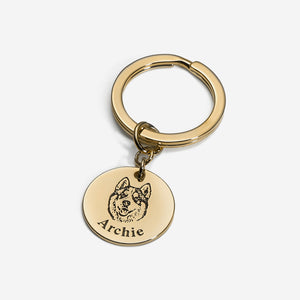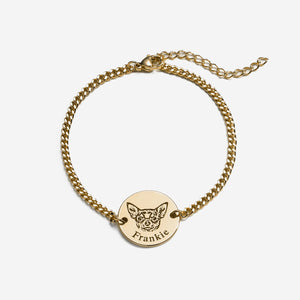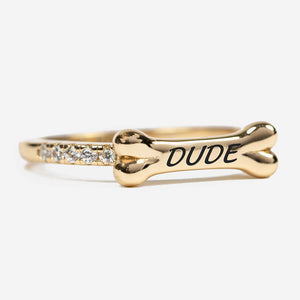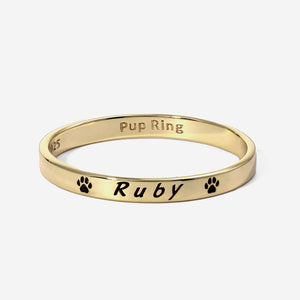We’ll talk about 5 different behaviors and how to stop them, as well as a bonus trick at the end you can use to resolve most of your puppy problems! But first, there are some general tips that will apply to the way you approach all behaviors in your dog that you’d like to change.
General rules
Exercise
A tired dog is a good dog! A lot of behaviors come from a dog looking for a way to use its energy (physical or mental!) Making sure that your dog is getting enough exercise is one of the best places to start when addressing problem behaviors.
Stop rewarding bad behaviors
Whether you know it or not, your dog is always looking to you for feedback on what it’s doing. This doesn’t just mean getting treats or hearing you say “good dog!”. Your dog looks for body language, tone of voice, and attention. Attention can feel especially rewarding for some dogs, even if it’s negative. You also might be rewarding and reinforcing bad behaviors without even knowing it, like yelling when your dog does something you don’t like. You know that you’re angry, but even if your dog also knows you’re angry, it might appreciate the attention, or it might not be able to pinpoint the behavior that made you angry.
Redirect or Replace Bad Behaviors
Another great strategy for tackling bad behaviors is to redirect or replace them. That means giving your dog something else to do instead. If your dog is already busy, they can’t continue doing the things that upset you! This also helps by showing your dog the things that they are supposed to be doing anyway, and gives them a way to use up that physical or mental energy they were trying to express before.
Stay Consistent
If you have rules for your dog, you have to be consistent with enforcement. If you live with others, or even have guests over, make sure they understand the rules your dog has to follow. The reason that this is so important is because if you break the rules, your dog doesn’t understand why that occasion was “special”. It won’t understand why the rule was broken and might not understand that there is a rule at all. Your dog craves consistency so that it can understand what you want!
Try obedience training
Obedience training is a great way to tackle specific behaviors. It’s especially helpful if you can take obedience classes with your dog, where a professional can help you by giving exact directions or notice problem areas that you can’t, like the way you react to your dog or specific steps during your training that you’re missing.
Teach the “Place” command
The “place” command is one of the best ways to tackle bad behavior! It helps give your dog a “reset”. It’s not a time-out, but it helps tell your dog “right now I need you to do something that you know is good”. You can read more about teaching “place” at the end, and learn about how it can help you in lots of different situations!
Problem 1: Barking

DO NOT: Yell at your dog
When your dog is barking, yelling is the last thing you should do. You may think that you will distract your dog, but that’s probably not really true. Not only are you contributing to the noise problem, but your dog has no clue why you’re yelling. Your dog might think that you are just also “barking” at the same thing! Your dog might be trying to enforce its “space” from whatever it is barking at, and by yelling, it thinks you are doing the same thing. Or, if your dog understands that you’re upset, it might not understand why. When your dog can’t connect an action with your response, it doesn’t do any good.
DO: Give your dog something else to do!
In this situation, the best thing you can do is prevent barking by giving your dog something else to do, as well as desensitizing it to whatever it is barking at. You can also teach your dog to “speak”, and then “quiet” (or some other word that works well- one that you do not use often in conversation, that sounds very specific to the dog).
There are 2 different replacement approaches you can take here: You can have your dog do something in a different area from where the barking happens, or you can have your dog do something else that will keep it so distracted that it can’t bark. The “place” command is a great way to have your dog away from the window or door so it can’t see or hear things outside as easily. You could also have your dog do an activity that is really distracting, such as using a chew toy- it can’t bark if there’s something in its mouth!
You can also desensitize your dog to whatever it usually barks at, although that will be more difficult and in-depth than replacing the behavior. Finally, you can teach “speak” and “quiet”- this will teach your dog that there is a time and place for barking, and then it will also have a direct understanding of what it means to be “quiet”.
Problem 2: Pulling During Walks

DO NOT: Yank on the leash, allow your dog to continue the walk while pulling.
Yanking on the leash can actually hurt you or your dog. Especially if you walk your dog with the leash attached only to a collar, this can put an incredible amount of strain on your dog’s neck. Recklessly yanking on your dog’s leash might express that you are frustrated, but your dog won’t automatically understand why it’s happening, and will instinctively go the opposite direction from the force. Finally, if you continue to follow along when your dog is pulling, you’re just reinforcing it as an acceptable behavior.
DO: Stop and stay, go back home, try a different leash and/or walking method.
There are a lot of different approaches to eliminate leash pulling. For strictly discouraging pulling, just practice walking, but the moment your dog starts to pull, you stop. Do not pass go, do not collect $200. You can either stand still until your dog stops pulling, or just go right back inside, ending the walk. This teaches your dog that pulling = no more fun.
There are tons of different guides and products out there that claim to stop pulling right away, and while it is very tempting to just throw money at flashy harnesses and leashes, I personally can’t speak to any magical solution. However, I can tell you what worked for me!
I actually struggled with leash pulling with my dog Cookie. I needed help training him and was fortunate enough to have an extremely talented trainer help me. I dropped Cookie off for a full day of one-on-one training and enrolled in group obedience classes. It was the best investment I have ever made in my dog! At the end of the day, the trainer had taught him several important skills (including “leave it”- to this day I can leave literally anything anywhere and tell my dog to leave it alone, and he will actively ignore it.)
My trainer showed me how to use a slip lead for walking with Cookie. I was surprised at how thin and short it was, but we went out to the parking lot to practice walking. The trainer explained that the lead should sit high up on his neck, just under his chin. This is effective because you can help control where your dog is looking, even with the gentlest pressure, and help communicate what you want. The difference was night and day and even after 7 years I rarely struggle with leash tugging.
The moral here is that no matter what training product you buy, it is no replacement for knowing how to communicate with your dog. (Of course, getting your own Personalized Dog Bone Ring is still a great way to show the rest of the world how much you care about your pup!)
Problem 3: Jumping on People

DO NOT: Encourage jumping
You may or may not be aware that you might be actively encouraging your dog to jump. If your dog jumps and you talk nicely or even get excited, that attention is a reward to your dog. You and your dog can express your feelings in better ways, so don’t feel bad for not allowing your dog to jump on you or other people as soon as you walk in the door. Also be sure that other people don’t encourage this behavior, because consistency is key.
DO: Ignore jumping, use the “place” command
Discourage jumping by completely ignoring your dog when it happens, and turn away from them so it’s more difficult to do. This will teach your dog that they have to calm down before they get attention from you. A great way to get this calm behavior is to use the “place” command, and when your dog follows your directions, then it gets all the love!
Problem 4: Inappropriate Chewing
 Chewing is an important and healthy behavior for your dog, but when it is inappropriate chewing, it can be a destructive and even dangerous behavior. Your dog might swallow something that will hurt it, or chew up an electrical cord. Both are very bad scenarios. Giving your dog something appropriate to chew on is the best way to fix this.
Chewing is an important and healthy behavior for your dog, but when it is inappropriate chewing, it can be a destructive and even dangerous behavior. Your dog might swallow something that will hurt it, or chew up an electrical cord. Both are very bad scenarios. Giving your dog something appropriate to chew on is the best way to fix this.DO NOT: Reward by replacing with food or leave out tempting objects.
When you replace chewing, you need to be deliberate. Replacing it with food or treats might stop the chewing for a minute, but it’s actually like giving your dog a reward on top of not actually eliminating the problem.
DO: Replace the object with a chew toy, teach appropriate chewing
The #1 way to eliminate problem chewing is by teaching your dog that they should only chew on certain things! Chewing on the right objects is a way for your dog to calm itself down and keep busy. It can also help your dog clean its own teeth! You may need to teach your dog to actually enjoy chew toys if it has not used them before, but once it starts it will be hooked! You can do some research to find the best chew toys. You can encourage your dog to start chewing by putting something tasty on the toy and roughing it up just a bit with something like a wood file- your dog will catch on a little more quickly that it’s supposed to be chewed and will soon be addicted to healthy chewing!
Problem 5: Begging
Regardless of your view on feeding table scraps to your dog, there is a time and place for feeding your pup. Maybe it bothers you when your dog begs, or maybe it makes your guests uncomfortable to have a dog breathing on their food.
DO NOT: Feed ANY food from the table or where you normally eat

DO: Put your dog somewhere else while you eat
While ignoring your dog while they beg is a great first step, you can help fix the problem quicker by having your dog somewhere else while you eat. Or, if you want to include your pup in your meals, you can put their own food somewhere else in the room- just don’t give in to the temptation to share scraps from the table anyway.
BONUS: Teach your dog the “Place” command
“Place” is one of the best things you can do for your dog’s behavior. You can use it for a huge range of situations- put your dog in its place when guests come over, when you know something is happening outside your dog may bark at, when you’re eating to prevent begging, or give them a signal to stop what they’re doing and behave. You can even take it to the next level if your dog’s “place” is a mat or cot that you can take with you when you travel. Then your dog will always have a spot that it knows how to use and behave in. Now if you’re at a dog friendly cafe, traveling somewhere, at a park, or visiting a friend, your dog has its place to rest and behave.
The basics of teaching “place” go like this- pick an object that you would like your dog to sit or lay on. You could use anything, but it’s a little more useful if it’s something that you can move around or bring with you to other places. Put down the “place” object and wait for your dog to investigate it. As soon as they get on the “place” (I will call it “spot” from here on), you start rewarding them! Use treats, “good job”, etc.! Reward the dog in different positions on the spot- sitting, standing, laying, as long as they are on the spot and behaving. Continue rewarding them intermittently as they stay on the spot. The point here is that you want them to just be excited about being on their spot regardless of whether they had the command or not.
Put down the “place” object and wait for your dog to investigate it. As soon as they get on the “place” (I will call it “spot” from here on), you start rewarding them! Use treats, “good job”, etc.! Reward the dog in different positions on the spot- sitting, standing, laying, as long as they are on the spot and behaving. Continue rewarding them intermittently as they stay on the spot. The point here is that you want them to just be excited about being on their spot regardless of whether they had the command or not.
Now that your dog already has a positive association with their spot, as soon as your dog steps on it, say “place” (or whatever word you want to use). It’s very important that you don’t continue to repeat the word, otherwise the word won’t mean anything to them. If they get off, ignore them completely. Don’t say “no” or tell them to go back. Simply wait for your dog to go back on its own and start rewarding again.
Finally, be sure you have a release command for your dog! It’s useful to have this for other training situations, but it’s important here because it’s a signal to your dog that the command is over. Having a clear release will actually prevent your dog from randomly leaving their spot because your dog knows the command is ongoing.
What do you think? Are you excited to start helping your dog learn their manners? Can’t wait to learn and use the “place” command? I hope you enjoyed this and found it helpful, and I look forward to writing for you again next week!







